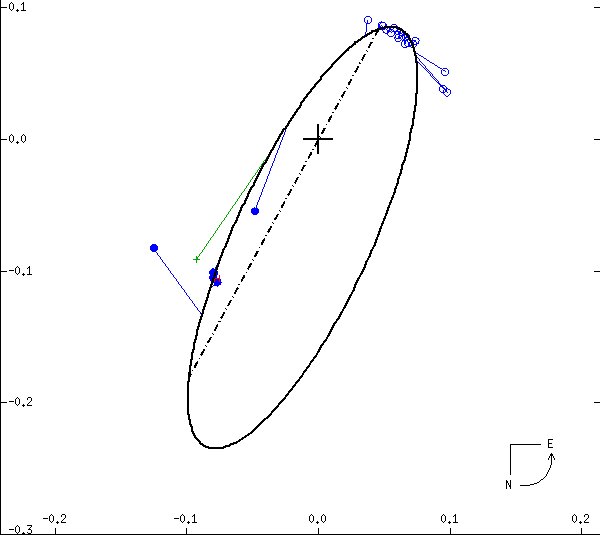
 |
So little of the 119-year orbit of 27 Canis Majoris has been observed that the uncertainties are still high. A fitted ellipse (in which one star is mathematically made to go about the other, the two in actuality orbiting a common center of mass) gives a mean separation of 95 Astronomical Units (some three times Neptune's distance from the Sun), a high eccentricity, and a high inclination, which (with orbital orientation) is why the principal star (at the cross) is not at the orbit's elliptical focus. Note from the angular scale how close the two are. From the Sixth Catalog of Orbits of Visual Binary Stars , W. I. Hartkopf and B. D. Mason, US Naval Observatory Double Star Catalog, 2006. |